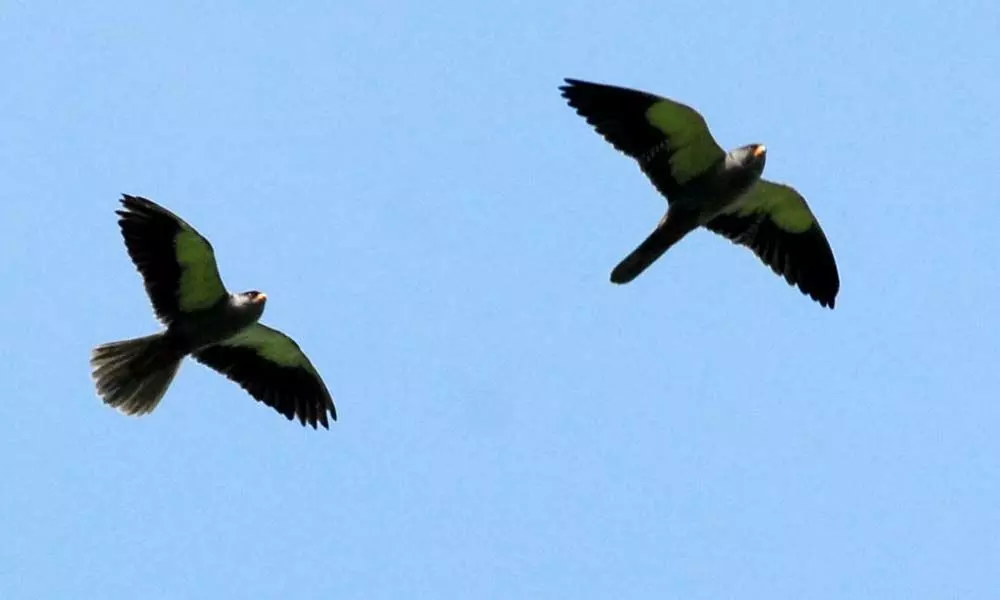Live
- Medak wears season’s festive look
- TG sets record in fine rice purchase
- Maintaining India’s growth momentum
- Study Reveals Teabags Release Billions of Microplastics and Nanoplastics, Entering Your Body
- Workplace Wonders: Creative Secret Santa Gifts for Colleagues
- Kumbh Mela 2025: Essential Guide to Comfortable and Respectful Attire for Maha Kumbh
- Hyderabad Real Estate Faces Setback: Property Sales Drop 7% Year-on-Year in 2024
- Gnani’s Gen AI Solutions Revolutionising BFSI
- Congress Party Celebrates Christmas in Gadwal District with Unity and Joy
- Trump's WHO threat sparks debate on the efficiency of global health governance
Just In

New Delhi: In less than 100 days, approximately 1,500 delegates, including representatives of national governments, international organizations,...
New Delhi: In less than 100 days, approximately 1,500 delegates, including representatives of national governments, international organizations, scientists, conservation groups and other wildlife experts will gather in Gujarat's Gandhinagar for the 13th meeting of the Conference of the Parties to the Convention on Migratory Species (CMS COP13).
COP13 will run from February 17 to 22, 2020, with a high-level event preceding it on February 16.
CMS COP13 will be guided by the theme: 'Migratory species connect the planet and together we welcome them home'.
Based on an ancient Sanskrit saying, it highlights the need for governments and stakeholders across the world to provide a hospitable place for migratory animals.
The theme also underscores the urgency of protecting natural habitats, which migratory species rely upon as part of their movements, throughout their life cycles and migration ranges.
CMS COP13 comes at a crucial time for migratory species.
The UN global assessment on biodiversity and ecosystem services, released earlier this year, documented the dramatic decline of biodiversity in all parts of the world and concluded that without increased action, over one million species could face extinction in our lifetimes.
COP13 will also provide important inputs to the negotiations of a new global framework on biodiversity which will be adopted at the end of 2020 in China.
CMS Acting Executive Secretary Amy Fraenkel said in a statement to IANS: "Migratory species play a vital, role for ecosystems around the world. CMS species include some of the most iconic species on the planet, including elephants, whales and dolphins, raptors and songbirds. The recent UN global assessment tells us that we must step up our actions to address the threats to migratory species and biodiversity more broadly."
"COP13 will be an important meeting to advance our collective efforts to meet this challenge."
What to expect at COP13?
The COP will consider adding new species to the CMS Appendices to provide them with better protection.
Proposals for CMS Appendix I (for endangered species, providing the strictest protections), include the Asian elephant, the great Indian bustard, the Bengal florican, the antipodean albatross, and the oceanic white-tip shark.
Threats to the Asian elephant include habitat loss and fragmentation, poisoning, poaching, illegal trade, and obstacles to migration such as railways.
The jaguar is the largest native feline in the Americas.
It is now found only in about 60 per cent of its historic range of a hundred years ago.
Deforestation, hunting, illegal trade, cattle ranching and obstacles to migration pose serious threats.
The smooth hammerhead shark, the tope shark, and the urial (wild sheep) have been proposed for listing under CMS Appendix II (migratory species with an unfavourable conservation status).
The jaguar and the little bustard have been proposed for listing on both CMS Appendices.
Proposals for concerted actions -- focusing conservation measures efforts on specific species among range states -- will also be considered.
Twelve new proposals have been submitted for adoption at COP13, including for the Asian elephant, the giraffe, the nut-cracking chimpanzee, the Irrawaddy dolphin, the South Asian river dolphin, and the harbour porpoise.
COP13 will also consider the impacts of climate change on migratory species, which is a key driver of species extinction and exacerbates other threats.
While renewable energy is a key part of the solution to climate change, the COP will also consider efforts to strengthen the CMS Energy Task Force, which focuses on reconciling renewable energy infrastructure with the conservation of migratory species.
COP13 will also discuss further action to address the illegal killing of birds, a major problem across the Mediterranean.

© 2024 Hyderabad Media House Limited/The Hans India. All rights reserved. Powered by hocalwire.com







